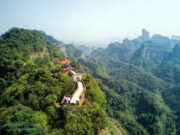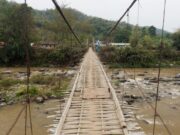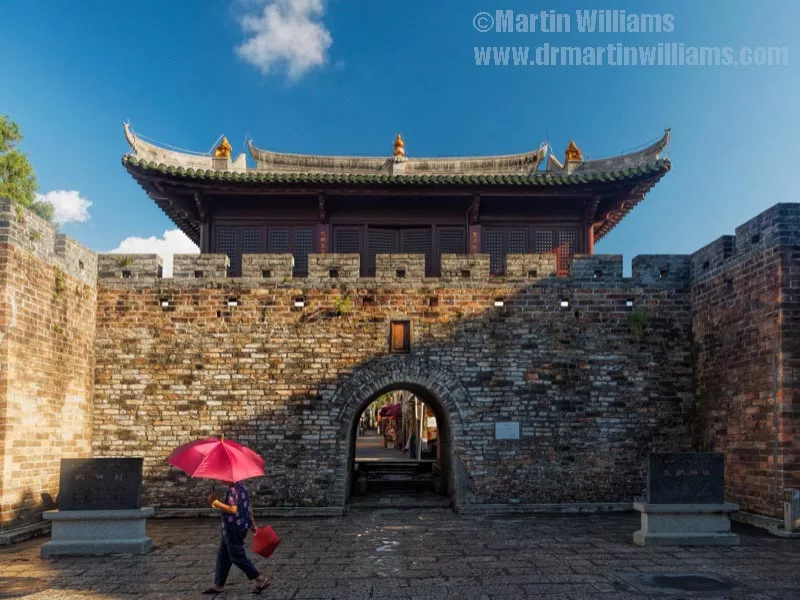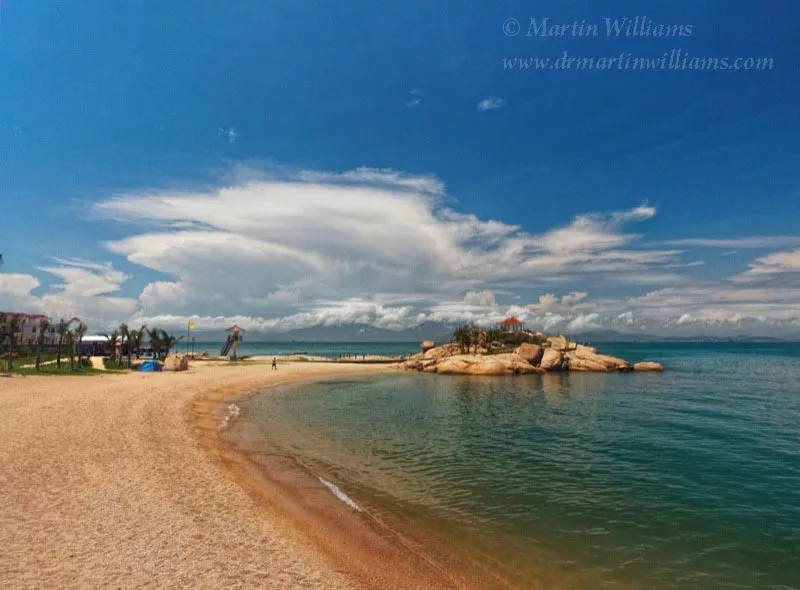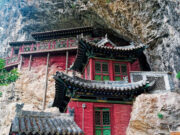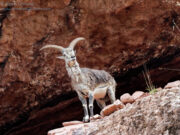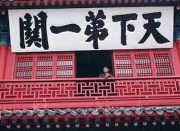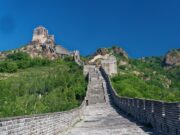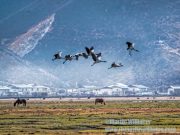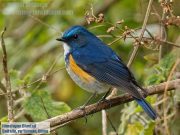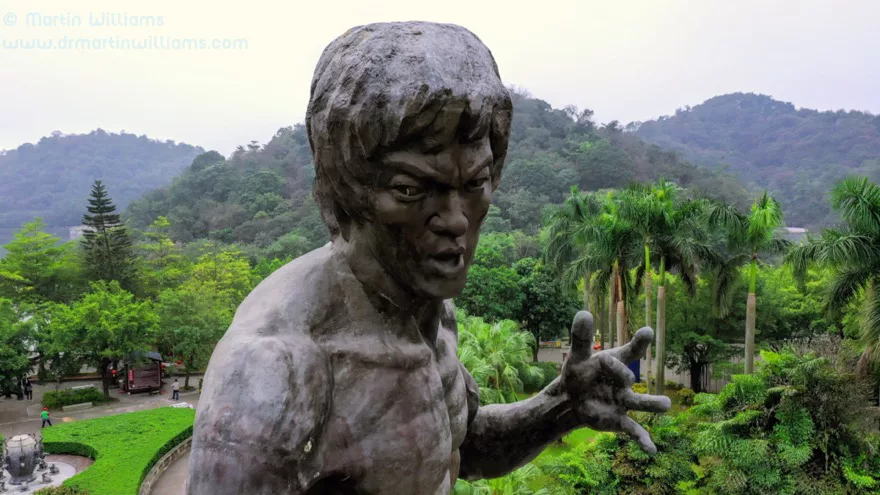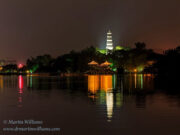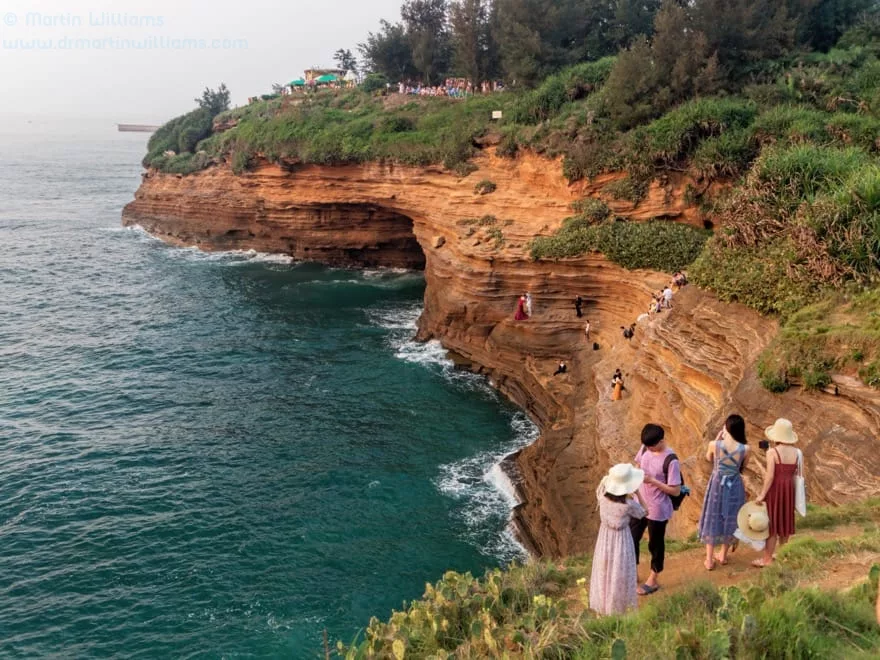On a map, the Leizhou Peninsula looks like a spur of land thrusting south from the China coast towards Hainan Island. Since much of the peninsula has been designated within a geopark because of a host of volcanoes, and Hainan has mountains soaring to over 1800 metres, you might expect it to be hilly, perhaps with areas of the kind of peaks that dominate Hong Kong.
Yet driving into the peninsula from the main city here, Zhanjiang on the northeast coast, the landscape is surprisingly flat. It’s not always billiard table smooth – in places the land undulates gently, almost recalling parts of southern England, but there seems little hint there were volcanoes active here long after Hong Kong’s last volcano exploded, with the most recent eruptions within the last 10,000 years.
There are expanses of rice fields, too. Recently, there were farmers preparing fields for spring planting, perhaps re-flooding areas that dried during winter. Another farmer strolled by a paddy, shepherding a flock of ducks that waddled ahead of him.
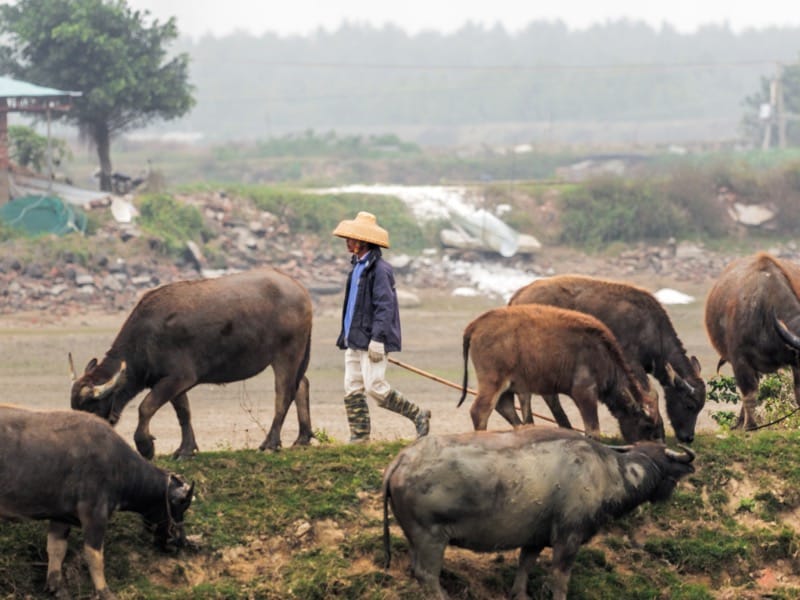
Approaching the west coast, there are extensive fishponds, each perhaps the area of a football field. Here, too, there may be scenes typical of life in rural China, like water buffalo grazing on a grassy bund, escorted by a man in a bamboo hat. Unlike at Pui O on Lantau, these are still working buffalo, and the adults surely pull ploughs through nearby rice fields.
Mangroves fringe the coastline. There’s even the grandly titled Guangdongleizhou Jiulongshan Mangrove Wetland Park, where a host of egrets and night herons gather to nest in spring. “Jiulongshan” refers to Nine Dragon Hills, yet look around and there are just gentle hillocks nearby,
Iconic bird elusive at wonderful wetland
In the northeast of the peninsula, beyond the mangroves at Leizhou Bay, low tide reveals vast sandflats and mudflats. While these may sound unappealing to many people, they teem with life like shellfish and crabs, underpinning a thriving ecosystem that led to the Beijing-based Society of Entrepreneurs & Ecology ranking Leizhou Bay among China’s ten most notable coastal wetlands.
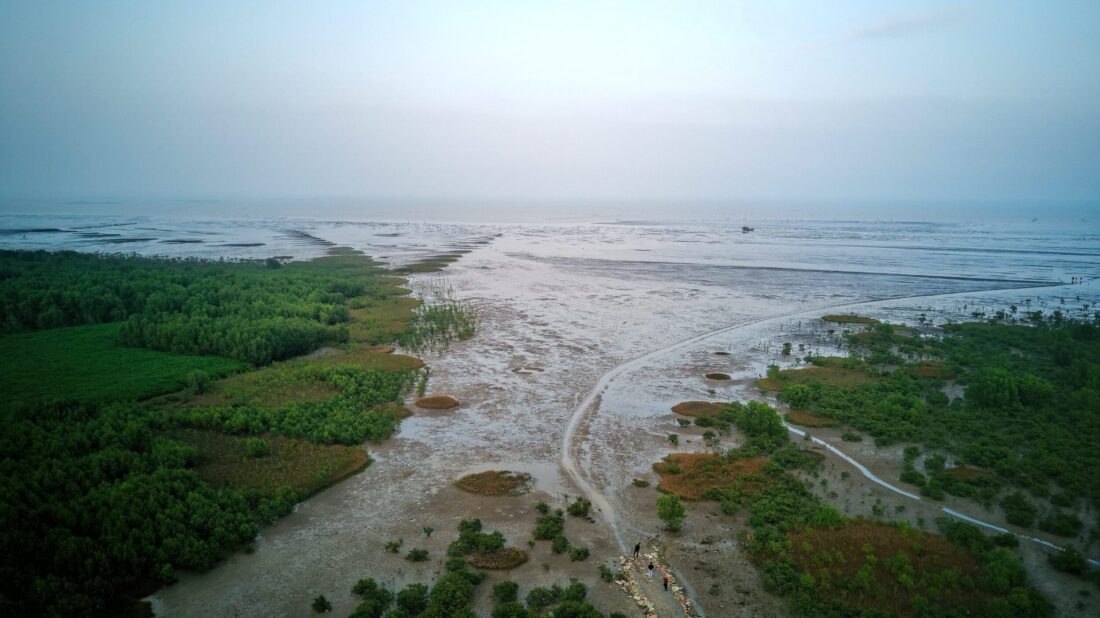
That ranking came in December 2015, a year after birdwatchers counted 38 Spoon-billed Sandpipers in the bay. For most bird species, a total of 38 individuals would be of no great significance, yet the tally made news among birdwatchers internationally – as this sandpiper is among the world’s most threatened birds. It was rare in the 1970s, when surveys on the breeding grounds in northeast Asia found up to 2800 pairs, yet by the turn of the century there were less than 1000 pairs, and numbers kept plummeting until by 2010 there were at most 200 breeding pairs.
Spoon-billed Sandpiper was already an icon among birdwatchers, as the only shorebird with a flattened, almost shovel-like bill; yet it now gained more fame as it looked destined for extinction. Conservation measures were launched, including help for breeding pairs in the Arctic, and more surveys at their winter haunts from China to Burma – which led to the discovery that Leizhou Bay is a prime site for this sandpiper.
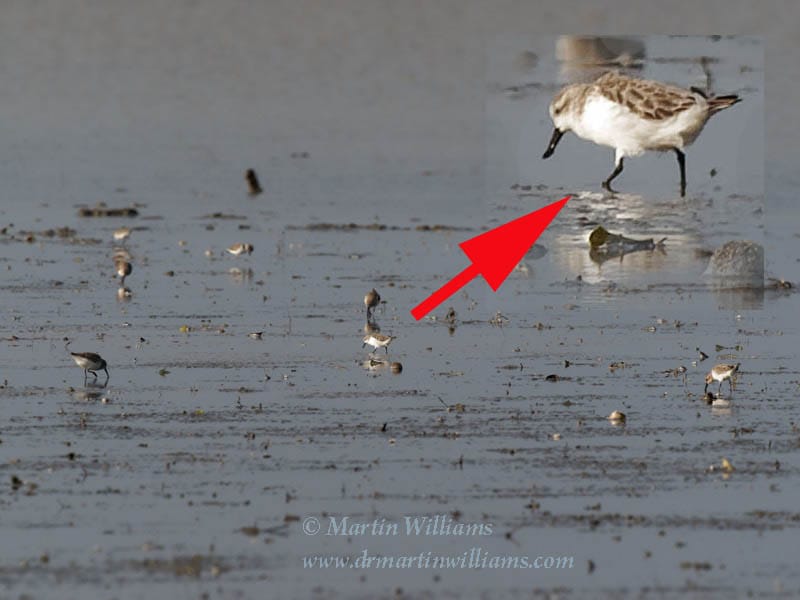
But even at this prime site, it isn’t necessarily easy to find Spoon-billed Sandpipers. Not when they’re little bigger than sparrows, and the sandflats seem to extend forever. I recently searched with He Tao, who works with the nature reserve covering the bay, and we found only one despite walking what seemed well over a kilometre back and forth.
The search was rewarding in other ways – especially as expansive tidal flats like these are wonderful, wild places. Hundreds of metres from the shoreline, with the tide receding, a sheet of water across the flats makes it seem like you’re walking on a gigantic mirror reflecting blue sky and clouds.
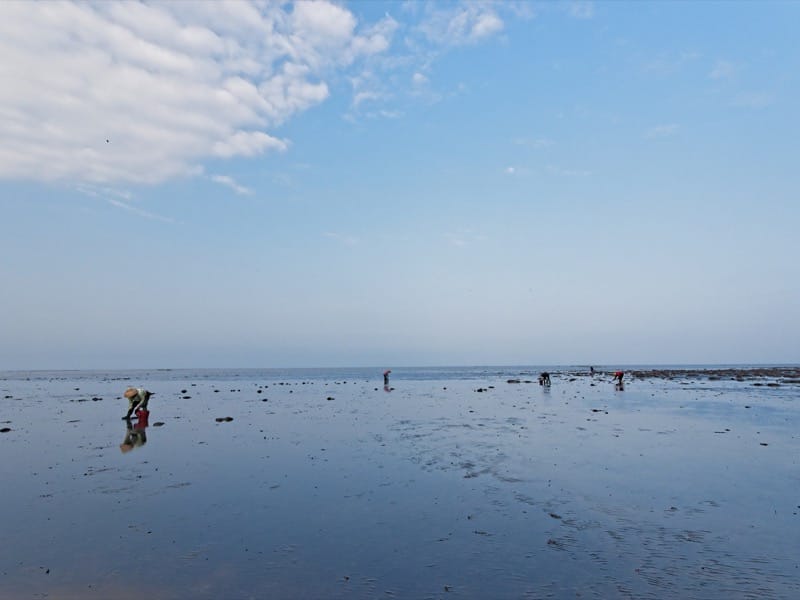
Shellfish collectors followed the tideline. There were parties of shorebirds, along with gulls, hundreds of which later congregated to roost as high tide returned.
Pagoda park and firecrackers
While the peninsula has been a place of mixing cultures, and of trade with Vietnam and beyond, it seems to have remained a place apart from much of China, even nurturing a unique dialect. Today, the city of Leizhou in the heart of the peninsula is something of a backwater, home to only around 300,000 people.
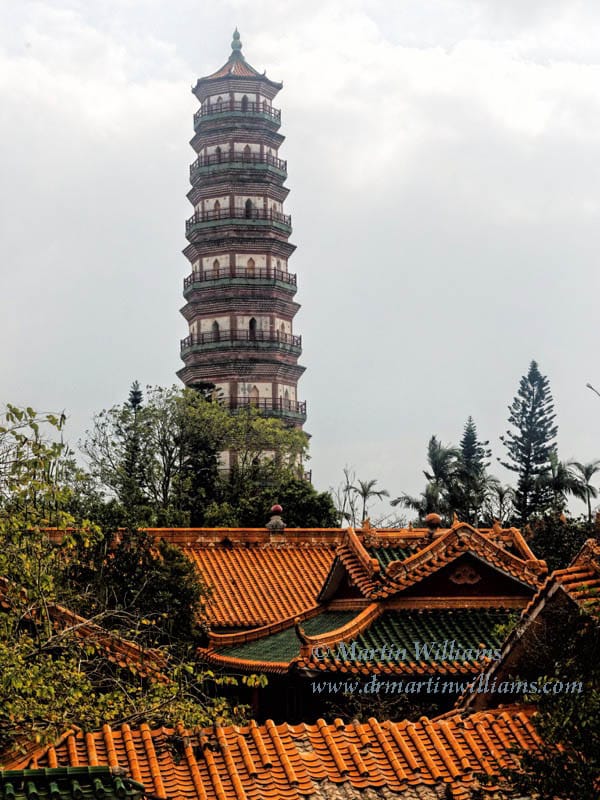
At the eastern edge of the city, the 57-metre high Sanyuan Pagoda soars above fields and neighbouring buildings. It dates from the Ming Dynasty, and construction started in 1613, taking two years to complete. The pagoda is set in a small park with pavilions and fruiting trees, and while there’s a small entry fee it seems tranquil, for Leizhou is evidently well off the tourist trail.
Nearby is what might be dubbed an old quarter in some places, referred to as “ancient city” in various online pages about Leizhou. There’s a warren of narrow streets, lined by the kind of south China style buildings that are now hard to find in Hong Kong. They look solidly built, with overhangs sheltering walkways below, shops open to the street including an otherwise trendy-looking hairdressers, and a store with traditional steamed buns. The main vehicles are motor scooters, some ridden by schoolkids who look to be barely teenagers.
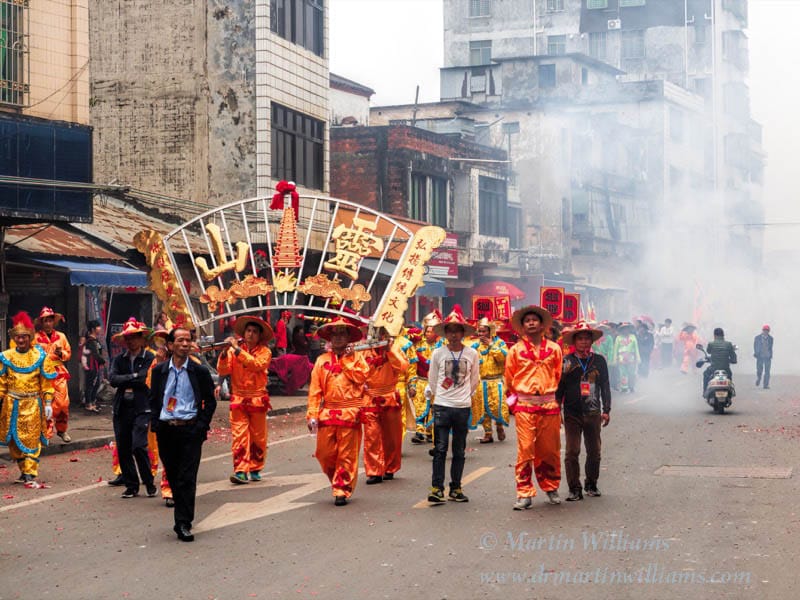
Leizhou is steeped in tradition. Even days after Chinese New Year celebrations in Hong Kong, lion dancers, a dragon dance troupe, groups of men in colourful clothing, another group in all black, parade along streets, accompanied by ferocious fusillades of firecrackers. In the evening, Cantonese opera performances are held in temporary, open-air theatres, attracting audiences of all ages.
Buddhist grottoes and an earthquake simulation
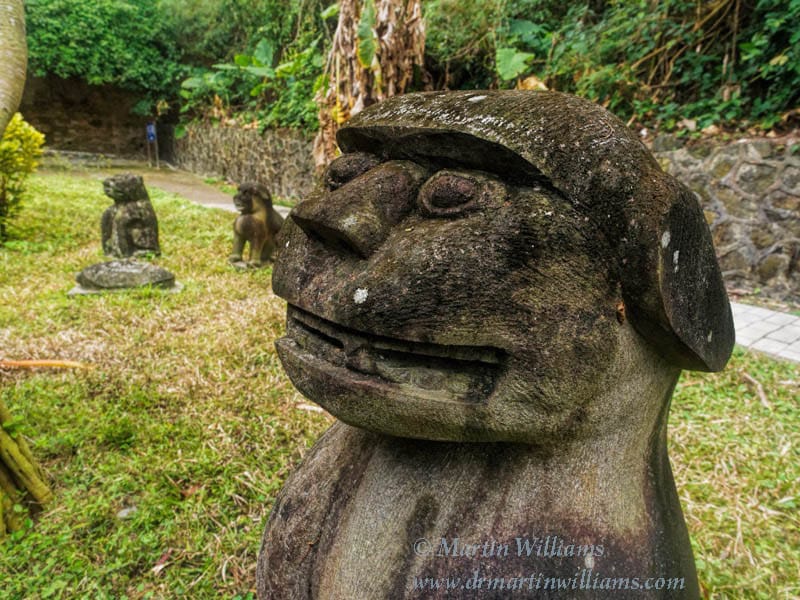
Leizhou means “Place of Thunder”, and from around 3000 years ago, locals have made simple stone dog carvings that evidently serve as totems to guard against natural disasters such as storms. There might be 20,000 or more of these statues scattered across the peninsula, and around eight of them have been placed by a geological museum at Huguang, at the north of the peninsula. They’re rather cartoonish looking, the tallest standing little more than knee-high, and fashioned from a volcanic rock, basalt.
Huguang is in an area where a volcano once stood. A ring of raised land around a lake that’s roughly 2km long. Information boards tell of this being a maar lake – formed as a result of magma rising, meeting water, and exploding. In places there are low cliffs of tuff, a rock made by incandescent ash that settled and fused into layers.
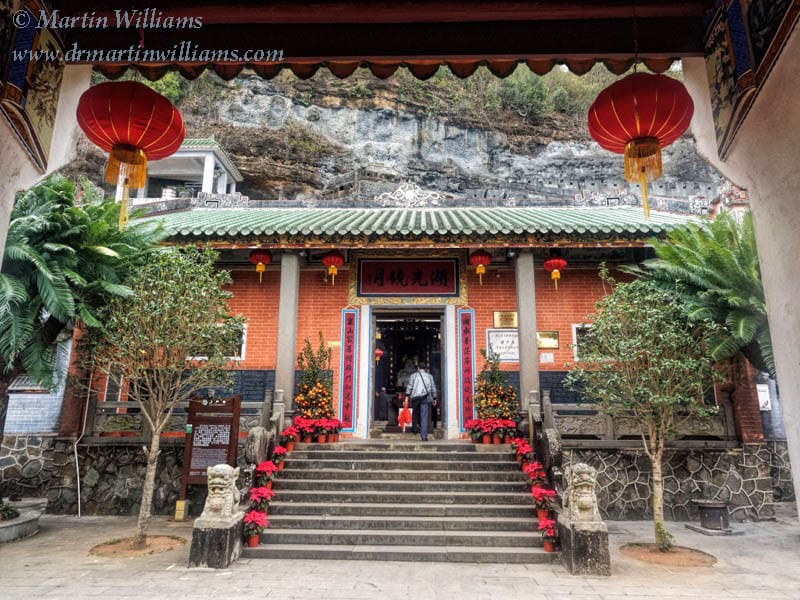
During the Sui Dynasty (581-681 AD), Buddhist monks and built temples including Lengyan Temple, which remains active today, with monks perhaps chanting in the main building, and nearby statues in grottoes hewn into the cliff. There are more grottoes at the nearby White Clothes Nunnery, one of which has a surprising twist – it’s around the size of a pedestrian subway, with Buddhist statues in two chambers, which lead to … a chamber with rows of seating made to look like a tank, so visitors can enjoy a virtual reality experience watching war movies.
There’s a more appropriate virtual reality experience in an Earthquake Museum beside the geology museum: a room shakes vigorously and erratically to simulate a quake lasting over two minutes.
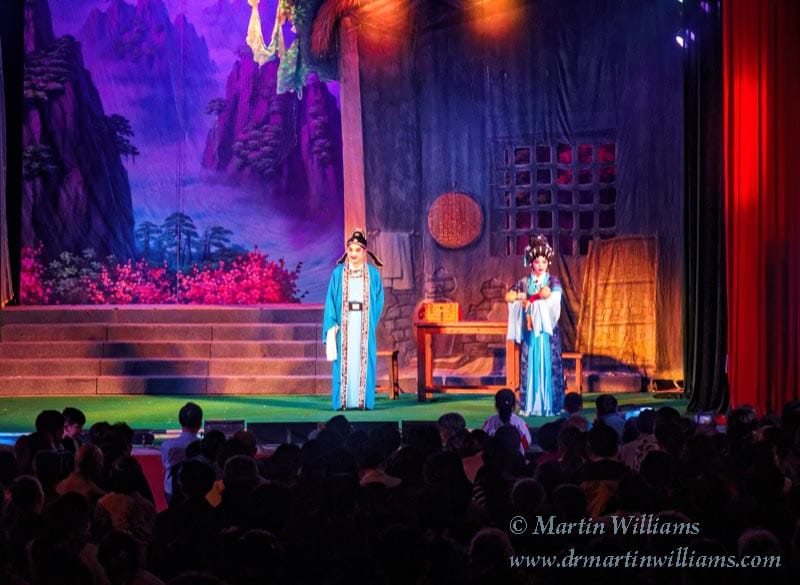
Almost a French Hong Kong
On 27 May 1898, the northeast of the Leizhou Peninsula, together with some nearby islands, was leased to France for 99 years – much as the New Territories were leased to Britain a month later. Japanese forces moved in during the Second World War, and after this the concession was returned to China.
This period of French rule evidently helped lead to the emergence of the port that became today’s Zhanjiang, where there are still some colonial era buildings including a Roman Catholic church.
Today, Zhanjiang is a thriving, modern Chinese city – albeit one that promotes itself as a resort praised as a “fairyland … and azure dreamland” while striving for an unlikely balance of construction, industrial development and ecological protection. Perhaps it’s best visited only briefly, as a gateway to the fascinating land of thunder.

